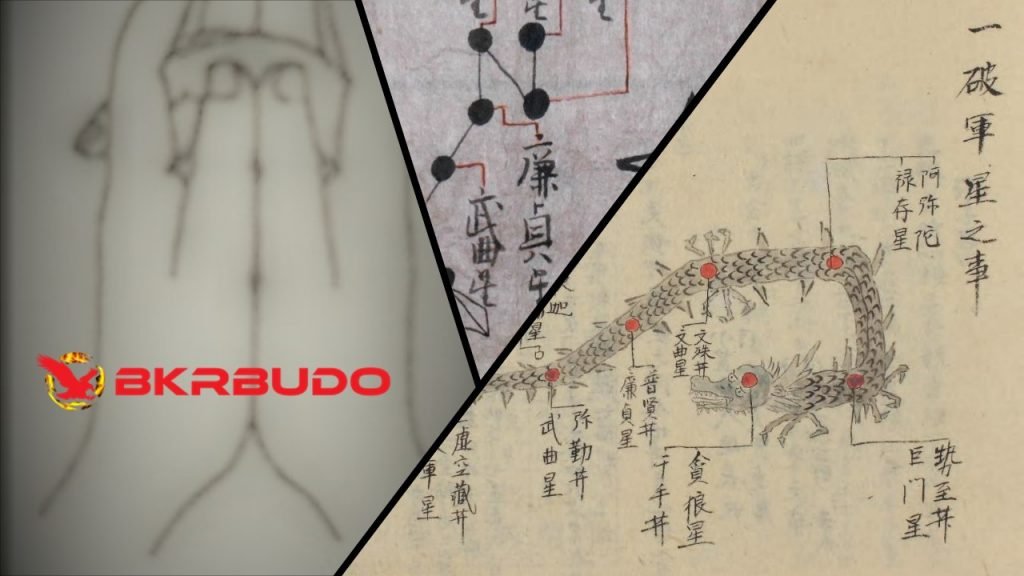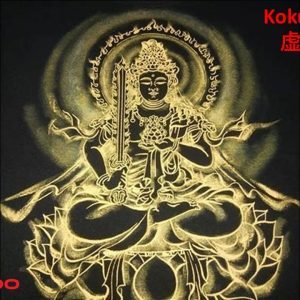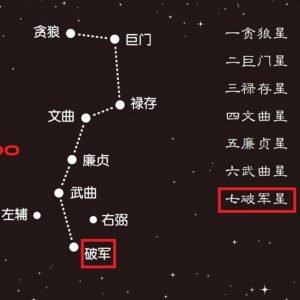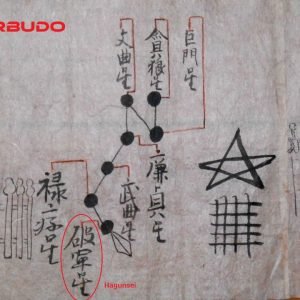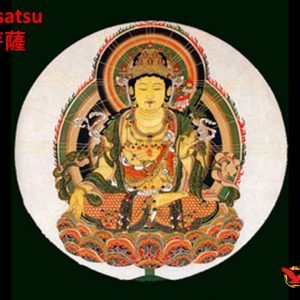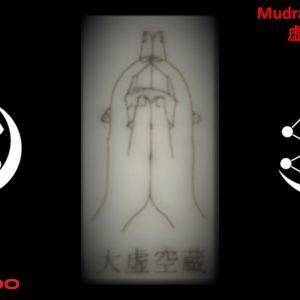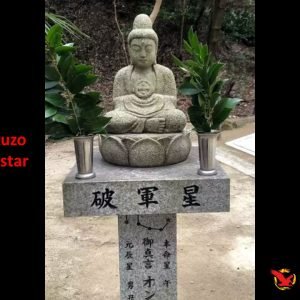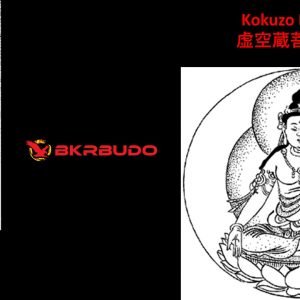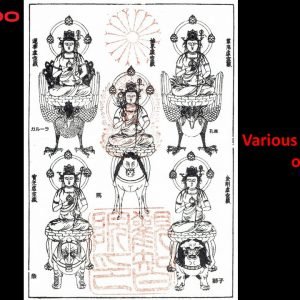Since even before ancient times, mankind has found significance and meaning in the various star constellations of the night sky. Even considering them gods. This is called Astrolatry.
Astrolatry is the worship of stars and other heavenly bodies as deities, or even as simple as the association of deities with heavenly bodies. Common examples of this are sun gods and moon gods in polytheistic religious systems all over the world. Other examples are the association of the planets with deities in Babylonian and Greco-Roman religion, such as Mercury, Venus, Mars, Jupiter, and Saturn.
In the far east Asia things were no different and I would like to introduce one belief or practice of revering the stars that dealt with military strategy, or Heiho 兵法 in Japanese. To our modern mind it may seem extremely superstitious and risky to base your military strategy on the stars in the sky, but in ancient China, Korea, and Japan it was considered fundamental and logical.
When considering a battle plan, one of the first steps a Warring States Period Samurai General would take would be to find the location of the star known as Hagunsei (破軍星) or “the army breaking star” and the direction it is pointing in. Hagunsei is a star in the constellation of Ursa Major. It is the star at the end of the handle in the Big Dipper.
The reason it was so important to know the location of this star is because according to Scott C. Littleton in his 2005 published book, “Gods, goddesses, and mythology”, in Chinese fortune-telling, north is believed to be a very unlucky direction. Northwest is even worse. Hunters and soldiers traditionally did not point guns and weapons in the direction of this star.
In Chinese tradition, the Big Dipper is made up of seven stars:
- 貪狼星 Tanrōsei
- 巨門星 Kyomonsei
- 禄存星 Rokuzonsei
- 文曲星 Bunkyokusei
- 廉貞星 Renteisei
- 武曲星 Bukyokusei
- 破軍星 Hagunsei
Among these stars of the Big Dipper, the 7th star, or the “Hagun” star, was believed to point in the direction that if one fought in, one would surely lose, but if one fought with their back to this star, one would surely win.
The seventh star of the Big Dipper, Hagunsei, was also worshipped as the god of bows and arrows, and in the Middle Ages it was revered as the guardian deity of warriors and worshipped by many of the major samurai clans such the Chiba, Soma, Ouchi, and others.
This traditional superstition or belief in the Hagunsei star was deeply influenced by Taoism, the Yin-Yang and Five Elements ideology, and later by the Yin-Yang Doctrine that developed independently in Japan (Onmyodo), which gave rise to the belief that Amaterasu is the North Star (Hokushin Myoken), also known as Taichi. Originally, the worship of Hokushin Myoken was reserved for only the Japanese emperor, but later, it spread to the common people. Around this time, there also developed the tradition of “housing” the Buddhist deity, Kokūzō Bosatsu 虚空蔵菩薩, in the celestial star of Hagunsei.
Kokūzō Bosatsu is especially important to Japan’s Shingon sect of Esoteric Buddhism (Mikkyō 密教) and symbolizes the “vast and boundless” Buddha wisdom that permeates the universe. In Japan, believers pray to Kokūzō to grant them wisdom on their quest toward enlightenment. They also pray to Kokūzō to improve their memory, technical skills, and artistic talents. It is said that if one chants the “shingon” (真言) of Kokūzō Bosatsu one-million times, Kokūzō will grant you incredible powers with your memory.
But the warriors of old Japan looked to the Hagunsei star as the “celestial house” of Kokūzō – the breaker of armies – and worshipped the deity as a war god or “gunshin” 軍神.
The method of divination using the Hagunsei star has been transmitted since old times in the Tora no Maki, or the “Tiger Scroll” that the Gyokko Ryu’s military strategy was based upon. It can be found in Tiger Scroll of many martial art traditions or “ryū” (流), including the Ogasawara Ryu, which I have included a diagram from their manuscript with this post.
I find it interesting that the Gyokko Ryu’s scroll on their martial art, known as Kosshijutsu, also “houses” the deity of Kokūzō in the very first form of the style. The form “Koku” (虚空) begins with the practitioner performing the Kuji-in of Tenryaku Uchu Goshin Gassho (天略宇宙護身合掌) in front of their chest and then opens with Tenchi Inyo no Kamae (天地陰陽之構), symbolizing the initial state of the universe as being a supreme oneness and then separating into Heaven and Earth/Yin and Yang, in the vast Koku or “emptiness”.
To me it makes sense why Tozawa Hakuunsai, the founder of the Gyokko Ryu, would dedicate the martial art to the powerful deity star that can destroy whole armies.
Ninpō Ichizoku!!!
Sean Askew – 導冬 - Dōtō
Bujinkan Kokusai Renkoumyo
February 10th, 2021
Sources:
軍礼 (霜), Late Edo Period collection of Ogasawara family military manuscripts, Imperial Household Agency, Tokyo Japan.
国文学解釋と鑑賞, Volume 57, Issue 728, 至文堂, 1992
妙見信仰の史的考察, 中西用康, 平泉明, 平泉明事務所, 2008
真言密教聖典, 清秀·小野, 大聖社, 1915

